Antimicrobial drugs and drug resistance
1/28
There's no tags or description
Looks like no tags are added yet.
Name | Mastery | Learn | Test | Matching | Spaced |
|---|
No study sessions yet.
29 Terms
When are antimicrobial drugs used?
Used when immunization has not occurred and the immune system has difficulty to eliminate infection
Useful against bacterial infection not viral, very few antivirals are available
These are compounds that kill or control the growth of microorganisms in the host
What kind of toxicity should drugs display
Selective toxicity or they will cause damage to the host
What’re the 2 broad categories of antimicrobial drugs?
Synthetic
Natural
How does a large number of antibiotics occur?
Naturally without any real clinical use cuz of solubility
Produced by bacteria and fungi
What’s another way antimicrobial drugs can be described?
Based on being either bacteriostatic (inhibit from growing) or bacteriocidal(kill it) (how they work)
Broad spectrum (affect many different types) or narrow spectrum (limited host range)
What’re some of the antibiotic targets?
Cell wall synthesis
Folic acid metabolism
Cytoplasmic membrane structure and function
DNA gyrase
RNA elongation
DNA directed RNA polymerase
Protein synthesis (50S inhibitors)
Protein synthesis (30S inhibitors)
Protein synthesis (RNA)
Lipid biosynthesis
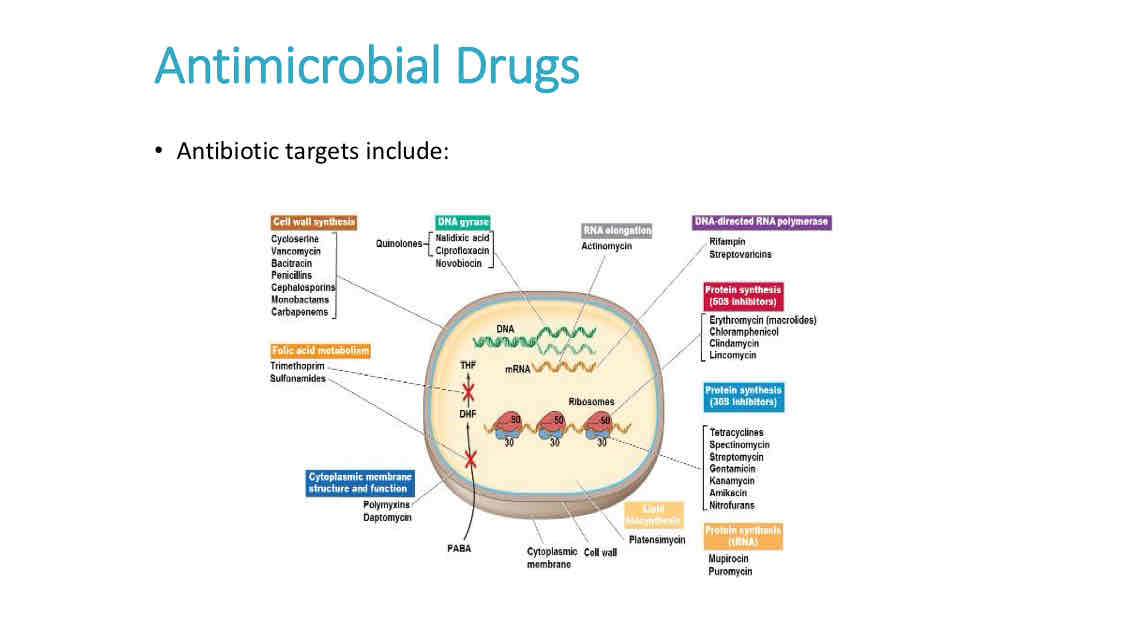
What do cell wall agents do?
Offer excellent selective toxicity
Most widely used class of antibiotics
Explain what the beta lactation antibiotics are
Cell wall active agent
Largest class of cell wall active agents
Common feature is beta-lactation ring
Naturally occurring: produced by penicillin and Cephalosporium fungi
Can be modified in the lab to produce semi-synthetic drugs that have a modified spectrum of activity
Susceptible to beta lactamases which are enzymes produced by some bugs to cut and inactivate beta lactams
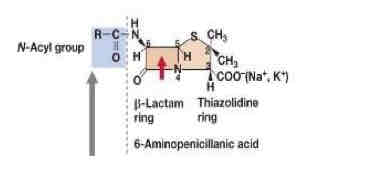
Explain what penicillin is and does?
Cell wall active antimicrobial drug
Have a narrow spectrum of activity
Characterized by a five membered ring attached to the beta lactation component
Target transpeptidation in gram positive bacteria
Cannot penetrate outer membrane of gram -ve bacteria
Semi synthetic penicillin are modified to provide some activity against gram -ve bugs, ex: ampicillin
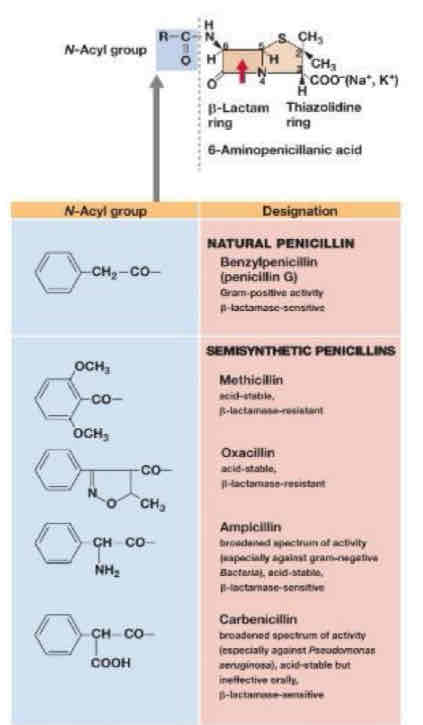
Explain what Cephalosporins are and what they do?
Cell wall active antimicrobial drug
Structurally distinct from penicillin, has SIX membered ring attached to theta lactam component
Also target transpeptidation of peptidoglycan
Broader spectrum activity than penicillin
Many semi-synthetic examples
Better resistance against beta lactamases
Grouped into generations : 1st, 2nd etc
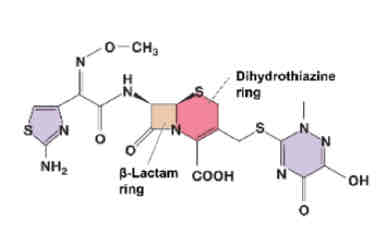
What’re growth factor analogs?
They have similar structures to growth factors but dont function in the cell
Analogs similar to vitamins, amino acids, etc
What’re some examples of growth factor analogs?
Sulfa drugs like sulfanilamide
Discovered by Gerard Domagk in the 1930s
Inhibit growth of bacteria by inhibiting folic acid synthesis and thus nucleic acid synthesis
Often used in combination with another analog called trimethoprim, The combination of this minimizes the likelihood of resistance
Isoniazid
Extremely narrow spectrum cell wall active agent
Analog of mycolic acid component needed by mycobacterium spp
What’re some other nucleic acid synthesis inhibitors?
Quinolones
Synthetic antimicrobials
Inhibit DNA gyrase by preventing supercoiling of DNA
Active against both gram -ve and gram +ve bacteria
Ex: ciprofloxacin a fluoridated quinolone (fluoroquinolone)
Useful against life threatening infections
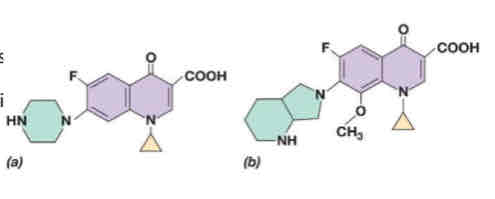
What do you use when you dont know what disease is?
Hit it with broad spectrum drug
What do protein synthesis inhibitors do?
Target 70s ribosomes
Good selective toxicity
Some issues because human cells have 70s ribosomes in the mitochondrial matrix
What’re the 3 types of protein synthesis inhibitors?
Aminoglycosides
Tetracycline
Macrolides
Explain aminoglycosides
Bind to 30s subunit of 70s ribosomes
Block translation
Narrow spectrum which is useful against gram negative bugs
Often used as a last resort drug
Ex: Streptomycin, gentamycin, neomycin

Explain tetracycline
Broad spectrum
Produced by the species of the streptomyces genus
Bind to 30s subunit
Consists of both natural and modified semisynthetic drugs
Binds to calcium damaging teeth and bone so shouldn’t be used in children and pregnant women
Used in veterinary medicine and to promote animal growth
Creates problem with resistance
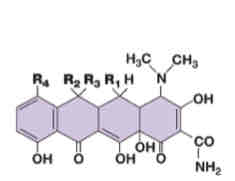
Explain macrolides
Broad spectrum of activity
Bind to the 50s ribosomal subunit
Only inhibits translation of some proteins
Some proteins are preferential translated and others are not
Creates a detrimental protein imbalance inside the cell
Useful to treat infection in patients with allergies to beta lactam antibiotics
Ex: erythromycin and azithromycin
Produced by Streptomyces spp.

What’re the different types of novel antibiotics?
Daptomycin
Platensimycin
Explain Daptomycin
Novel antibiotic
Produced by streptomyces spp
Cyclic lipopeptide
Active against gram positives
Pathogenic Staphylococcal spp and streptococcal spp
Forms pores in the plasma membrane causing depolarization
Cell cant synthesize necessary biomolecules
Cell death occurs
Resistance can occur when bacteria alter plasma membrane composition
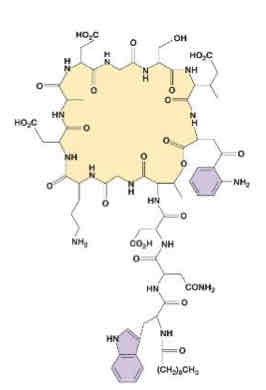
Explain platensimycin
Novel antibiotics
Inhibits fatty acid biosynthesis
Produced by streptomyces platensis
Broad spectrum of activity against gram positive bacteria
Useful against important resistant gram positive pathogens
MRSA and VRE
Does not cause toxicity
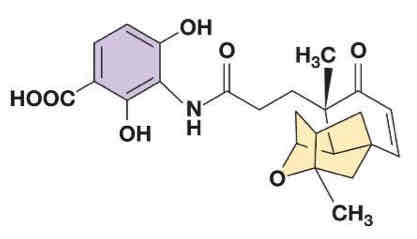
When does antibiotic resistance occur?
When an organism develops a mechanism to elude the activity of an antimicrobial drug that it should otherwise be susceptible to
Gene for antibiotic resistance can either be encoded on a plasmid or directly within the genome
Resistance is prevalent because of widespread and sometimes incorrect use of antibiotics
Medicine, veterinary medicine, agriculture
How do we prevent antibiotic resistance?
Infection prevention
Rapid and conclusive diagnosis
Appropriate/ prudent use of antibiotics
Prevention of transmission
What’s a mechanism that penicillin does?
Reduced permeability
What’s an example for inactivation of antibiotic?
Penicillins, chloramphenicol, aminoglycosides
What’s an example for alternation of target?
Erythromycin, streptomycin, norfloxacin
What’s does sulfonamides do?
Development of resistant biochemical pathway
What antibiotics work for efflux?
Tetracyclines, chloramphenicol, fluoroquinolones